#and if you don't like black licorice don't use anise
Explore tagged Tumblr posts
Text
I know y'all have seen the fall hot drink recipe post. that I can't find right now. but of course I've had my own for years, here is how I make what is essentially very lazy wassail when I'm cold and want hot cider:
Put a mug's worth of apple cider in a pot and add some orange slices (I always wash the orange before cutting it, but leave the peel on, you you want them oils).
Add spices to your taste, I have mulling spice bags that I use but if I didn't I would use some combo of the following, and whole spices are better for this if you have them: cinnamon stick, clove, allspice, ginger (fresh peeled ginger preferred), anise, nutmeg.
Add a splash of cranberry juice. Pomegranate juice also works. If you don't have juice on hand you can also use a teabag of a similar flavor palette. I used pomegranate raspberry recently and it was fantastic. Remember to cut any strings off of teabags going on the stove.
Optional to add: lemon slice(s), apple slices. You can sub juice for the orange and/or lemon if you like or if it's easier.
Heat the pot over the stove to drinking temperature then pour it into a mug, filtering the add-ins out.
If the drink doesn't fill my mug when it's done, usually because I forgot and it boiled and it is also now too hot, I add cold cider on top, which also helps to bring it to the right temperature.
I am a fruit blend bitch so I've never messed around with caramel, what you are witnessing is me adapting my smoothie techniques into hot drink technique. enjoy.
#fall drink#my recipe#adventures in text posts#I've never met a measurement in my life sorry#my smoothie techniques are even more intricate#yes. techniques. not recipes.#I will share those too if asked#also fyi if you don't know your spice taste or are nervous start with 1/2 or 1 small cinnamon stick#you'll be more used to that flavor#then add allspice & cloves & nutmeg in small amounts and then try out the rest. and be sparing on nutmeg it's strong#and if you don't like black licorice don't use anise
3 notes
·
View notes
Text
y'all I bought a bottle of absinthe for new years (it will be used sparingly dw) but this shit is 124 PROOF?!!! It is 62% ALCOHOL??? vodka is somewhere around 80 proof. so I guess what I'm saying is I thought stolas would be kind of a lightweight but FUCK absinthe is NOT a chugging kind of beverage. Also it tastes like anise (think strong black licorice) so yeah it's basically the epitome of Bad Time Juice.
I also can't believe that the only alcohol in the palace was either wine or Fuck Around Find Out Water (surely they'd have a botanical gin or some floral liqueurs?) so I can only assume stolas's servants looked at him at that anniversary party and decided "this is a man looking for consciousness' exit door"
this has been a psa please don't chug absinthe folks! You have fragile human organs not unholy writhing vaguely bird-flavored darkness and you will NOT like the results
29 notes
·
View notes
Text
What is my tea even going to taste like?
Ok, so I can't plant like...actual tea, or ginger, or cinnamon, or anise, or cloves. And I don't like chamomile, echinecia or lavender.
So what kind of tea can I garden?

My main ingredient is gonna be New Jersey Tea. Fresh, this tastes like wintergreen which...no thanks. BUT dried, which is the main way I would use it, it's supposed to taste like black tea, but kind of smokey with hints of cinnamon and orange. So far so good.
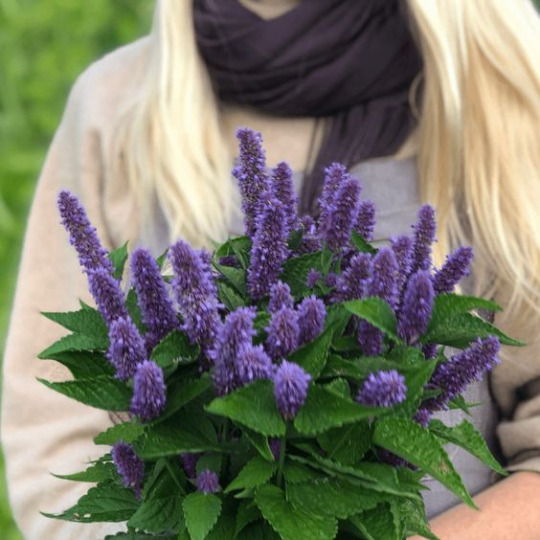
Anise Hysop is meant to taste like mint with anise (licorice) notes.

Geum tastes like cloves and a little bit like cinnamon.

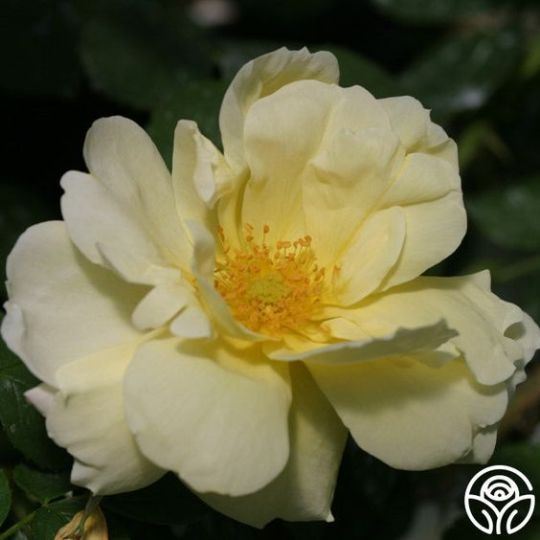
Rugosa roses have the most flavor of all the rose hips, supposedly, and taste lightly floral and also like citrus.

Lemongrass tastes like mild citrus with a hint of ginger.
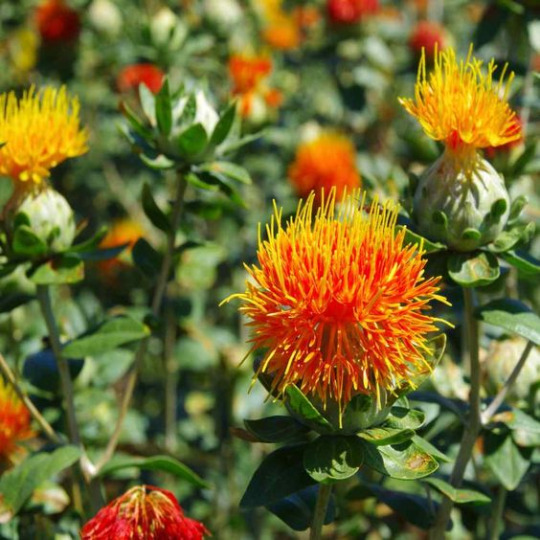
Safflower: mellow, slightly nutty taste, but makes your tea pretty and adds a bit of base-note flavor.
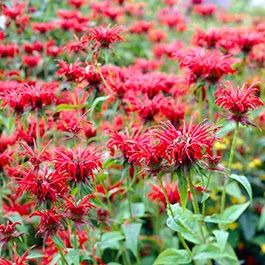
Bee Balm: like a particularly refreshing mix of mint, basil and oregano.


Honeysuckle: Ok, so they say Japanese honeysuckle is the kind you ought to make tea out of for the best flavor. But it's wildly invasive, and we have highly scented native varieties that work with my color scheme, so we'll be going with those. I've read that it actually tastes like a floral-leaning green tea with sweet aftertaste, and some people say there's hints of vanilla in there, to.
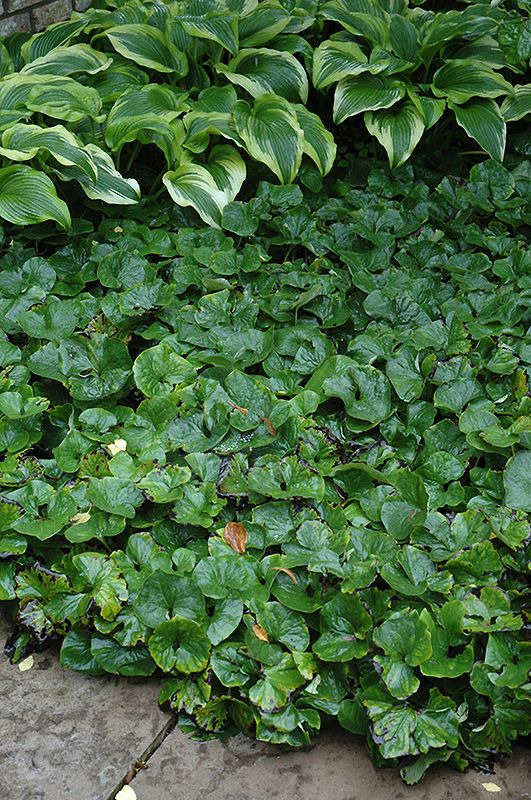
I'm also hoping to put some Canadian wild ginger into the garden once it establishes- but it's a very sunny spot, so I have to wait for the other plants to establish well enough to bring this plant the shade it needs. This is supposed to taste a lot like tropical ginger, but without the spicy notes. (Note that this plant shouldn't be straight up eaten. It does contain toxins if you're gonna nosh it instead of briefly soaking it in water. Don't forage something and then get mad at me.)
All in all, I feel like it's going to be a fun experiment to play with the recipe combining these elements into a delicious tea. But the flavors are all there to make this super tasty.
82 notes
·
View notes
Text
Licorice, feat. Hypnotic Poison, Lolita Lempicka, and more
PREVIOUSLY ON:
HYPNOTIC POISON, briefly (Dior, 1998)
Black Opium (YSL, 2014) and Black Opium Extreme (2021) retried
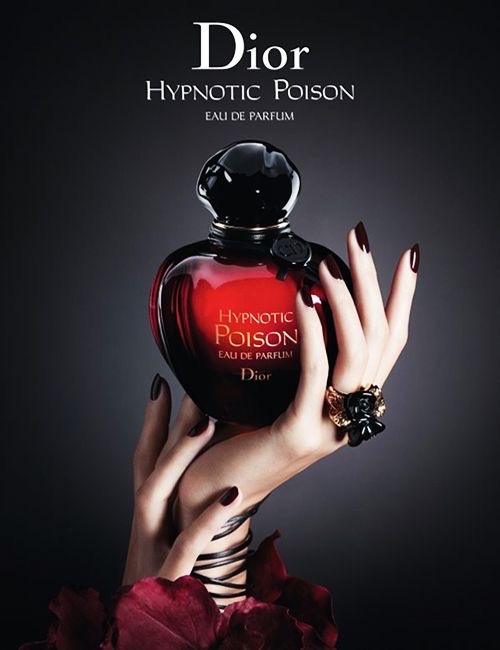
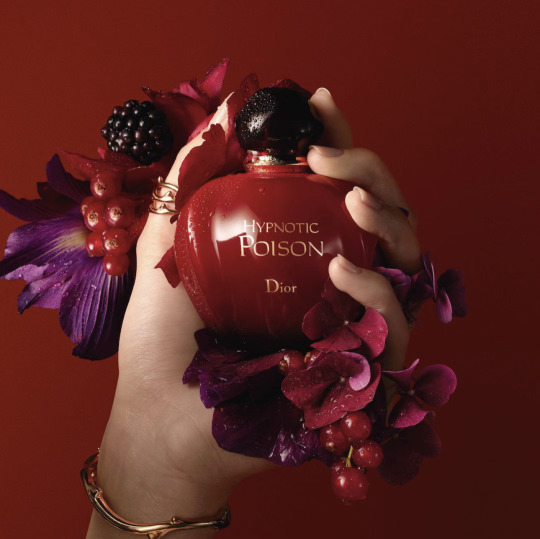
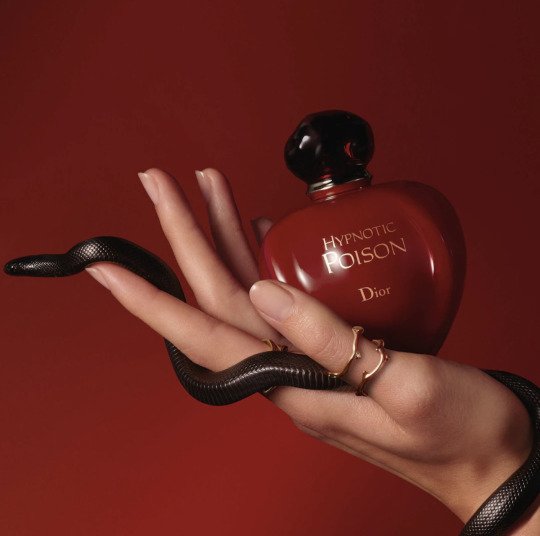
You don't wear Hypnotic Poison perfume, it wears you: that is the credo of this magnetic eau de toilette. The sultry fragrance bathes the skin in a mysterious and irresistible scent, like a bewitching elixir. (dior.com)
I forget how I recently came across this fact, but I found out that Hypnotic Poison, eau de parfum concentration, has licorice in it, which I most certainly had not perceived in the original eau de toilette, nor is it listed as a note. So I got myself a sample of that to compare to my bottle of the EdT. (It's the only Fancy Perfume I have an entire bottle of: a birthday gift.) I've tried them both multiple times now, but last night I actually wore one on each hand, and I wore A FULL SPRAY of the EdT, which is absolute madness compared to a single molecule just about choking me out five months ago. Apparently, I really am starting to tolerate perfume now.
The thing about EdPs and EdTs is that sometimes, it's not just a different concentration; they can actually be formulated with different notes. Curiously, in the case of Hypnotic Poison, the eau de toilette came out in 1998, and the parfum concentration didn't come out until 2014—a pretty wide gap there. Looking at the notes, we have—
Annick Menardo and Christian Dussoulier's original composition: Coconut, plum, apricot, Brazilian rosewood, jasmine, tuberose, rose, lily of the valley, caraway, vanilla, almond, sandalwood, and musk
and
François Demachy's EdP concentration: Licorice, almond, jasmine sambac, orange blossom absolute, vanilla, and tonka bean.
Somewhat hilariously, it's the EdT that smells simpler to me. I actually was not smoked out of the room by the tuberose this time, which is a massive plot twist in my personal development; the perfume had more of a jasmine-angel food cake vibe. Like, specifically the almondy meringue lightness of angel food cake, not a heavier almond-coconut-vanilla pound cake. (My mom bakes a lot, what can I say.) I don't see licorice listed in the notes, but I swear to you, I can smell it now. There's a—licorice connotation? It's there, somehow, so I'm going to guess Dior is using jasmine sambac in both concentrations—as I mentioned last time, jasmine sambac and licorice seem to blend amazingly, and the jasmine (and maybe the caraway?) is managing to imply an anise-type note, if one isn't really there.
As I also mentioned last time, the reason you (I) kind of want to be like, "you know, licorice/anise/whatever fragrances" is because we're actually talking about a compound called anethole; it's in star anise, fennel, and magnolia flowers as well. (As a side note, I have three magnolia trees in my neighborhood, and the scent has been floating through the air this past week. It's not the most anisic smell in the world, but it does remind me of my jasmine sambac/mogra sample, and it's been really nice.) So, "licorice fragrances" may also throw in a little aniseed here and there (and vice versa), because we're really talking about the more general scent of anethole.
(Bonus fact: anethole also causes the "ouzo effect," or "louche effect," which famously makes absinthe cloudy when you add water. My understanding is that absinthe generally gets the anethole from anise and fennel, not licorice root, but a perfumer might make a different judgment call there. I'm almost certain I have an absinthe-themed perfume oil around here somewhere, so we'll see.)
Now, something that's really interesting here is that Annick Menardo also created the eponymous Lolita Lempicka perfume in 1997, and as Bois de Jasmin says, that's the fragrance that "brought licorice notes to the mainstream." Hypnotic Poison arrived only one year later, and even though it doesn't have licorice listed, you can smell something, I swear.
While we're here, let's have a dance break for Lolita Lempicka (the 1997 original, not any of the do-overs called “Premier Parfum” or “Original”), which I bought last year when I first dipped my toe into the world of Fine Fragrance Samples:
If you were reading fashion magazines in the late '90s, you most likely know this one, and you know the bottle. Which I still covet.
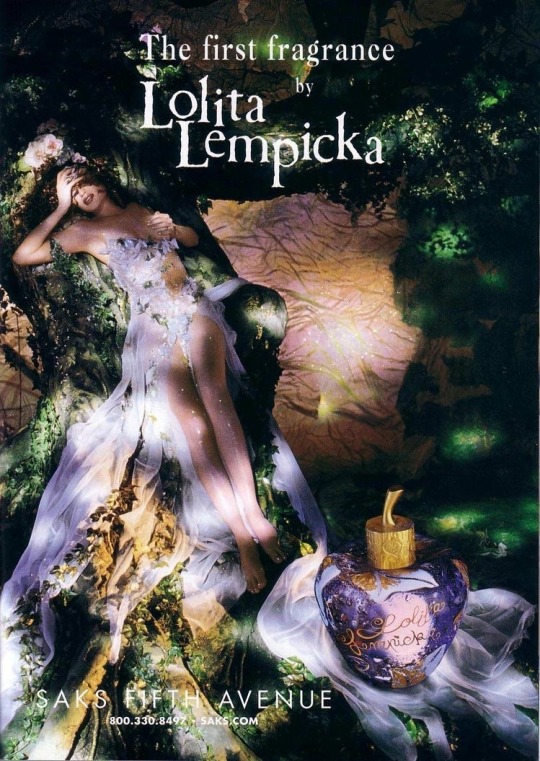
When I first got the sample a year ago, I tried it... and just kind of got a watery green (ivy, I guess) with some cherry, maybe a slight licorice, deep in the background. But the notes include star anise and licorice, ivy, cherry, violet, iris and orris root, amaryllis, vanilla, praline (someday I am going to have to write a post about wtf "praline" means in perfume), tonka bean, vetiver, and our old friend white musk. Like. Surely it can't just be "green"?
After what happened with Black Opium Extreme, I tried it again last week. Yeah. !CHERRY PRALINE LICORICE! Anything "green" was incidental on me, although the vetiver probably provides a bit of enchanted forest. Completely different from my first wear. And it's easier to see a family resemblance to Hypnotic Poison when those gourmand notes come out.
Let's jump back to Hypnotic Poison—this time, the newer EdP concentration. Much like Black Opium Extreme, it's not just a higher ratio of perfume to alcohol. It's actually a simpler yet woozier composition: licorice, almond, jasmine sambac (for sure this time), orange blossom absolute, vanilla, and tonka bean.
There's no coconut or fruits or rosewood or extraneous flowers. This is ANETHOLE and WHITE FLORAL and ALMOND VANILLA. It is not fluffy or angel-foody. This one, I actually get why you would call it "poison"; it's almost cloying, not in the sense that it's sugary-sweet, but in the sense that it's very deep and very heady. It feels like you could spray it on a handkerchief and chloroform somebody with it. I actually like it, but it's A Lot, and the fluffy eau de toilette with its smoke-and-mirrors suggestion of licorice feels more wearable to me. Which is a wild thing to say, given that I started writing about perfume on Tumblr by saying that a single whiff of it nearly made me pass out, but here we are.
When you set the Black Opiums next to the Hypnotic Poisons next to the Lolita Lempicka, you start to see why you'd use anethole notes in a fragrance. Even though people talk about how sweet licorice root is—and it is; I made myself eat some very fine Australian licorice candy for this post—the scent is sort of dark and... I don't know how to describe it. Like mint going through a goth phase? Aniseed seems more herbal-spicy to me, more like fennel (goth mints going out to get pizza). (Aniseed was also in the Australian soft licorice, but I had licorice-only jellybeans to compare it to; this is the attention to detail that you can expect from Cleolinda Industries.) I can see how you'd also put anise into Lolita Lempicka to keep the cherry-praline a little wild, a little sylvan, and why you'd only put licorice into the Hypnotic Poison(s) to underline something dizzyingly smooth. And yet, again—it's not that the 2014 Hypnotic Poison is sugary; it's that it's darkly, swooningly overwhelming, with a goth candy jasmine that somehow pulls it back from being saccharine. That's why you'd use licorice, to put a little bit of wicked queen into it—into Hypnotic Poison, into Lolita Lempicka, into Black Opium.
Offhand, I do have two other fragrances with anethole notes, although they deserve further entries of their own: Pink Sugar (Aquolina, 2004) and L'Heure Bleue (Guerlain, 1912), which COULD NOT BE FURTHER APART on the prestige scale. And both of those are stories for another time, but I'll say that Pink Sugar tries real, real hard to tame its ethyl maltol with some grown-up raspberry, licorice, and fig leaf notes, and it fails. Utterly. I was already a grown-ass woman when I chose to buy a full bottle of the stuff 10-15 years ago; I am not a snob. I love sugar perfumes! I defend them! You could actually knock someone out with this. It's Glinda with a glittering pink skirt so big that the Wicked Witch simply gets bowled over in the first act.
Guerlain's L'Heure Bleue (1912), on the other hand, is the pre-WWI sister to their golden post-war Mitsouko (1919). I would rather write more fully about L'Heure Bleue in the context of iris or even citrus, but the hidden darkness of its anise note, I think, contributes a lot to its famous sense of melancholy: "the blue hour," with war on the horizon.
As vastly different as these perfumes are—two femmes fatales, one enchanted princess, a sugar bomb, an elegant rumination—you start to see how anethole notes can add an olfactory "minor key" to fragrances. Whether you use an herbal anise or a more candied licorice (or both), you can add something more serious, wistful, or vampy to your fragrance, depending on what you combine it with.
Meanwhile, I have washed my hands a dozen times and also showered since last night, and I can still smell Hypnotic Poison, both concentrations, on my hands. Let’s hope Santal 33 goes well with licorice.
Perfume discussion masterpost
#perfume#perfume discussion#perfume: dior#perfume: lolita lempicka#note: licorice#note: anethole#long post#perfume: guerlain#perfume: aquolina
52 notes
·
View notes
Text

Masterlist about Voice
Voice Claim: Lzzy Hale
Other inspirations: Axl Rose, Robert Plant
Vocal range: almost four octaves
Voice type: dramatic mezzo-soprano with hints of Soprano sfogato
Speaking voice: gritty mezzo
Longest notes: 15 to 30 seconds
Instruments: piano, learning electric, rhythm/lead and bass guitar
Education: choir singer for a week, almost completely self taught
Genres: hard rock, glam rock, glam metal, pop rock, cock rock (yes that's a thing.), alternative rock, grunge, bits of heavy metal. Founder of cosmic rock.
Unique qualities: natural grit in every part of her range, long, sustained belts even into the 6th octave, crazy vocal runs lasting up to 30 seconds, incredibly powerful vibrato, ability to switch to clean voice after satanic howls in a second, mimicking electric guitar sounds/singing along to it, comfortable in the lower registers as well, extremely flexible voice and vocal agility
Three word description: Explosive. Unique. Legendary.
Stage presence: Cindy has been through a lot. She suffered, has too many unhealthy coping mechanisms for her unresolved traumas but music...is something else. When performing, no matter for one person or for an arena she is truly herself. Happy, carefree and a hurricane. She never can stay still, only when executing those famous hour long belts, otherwise she's running, jumping all around the stage. She is charismatic, magnetic not just because of her talent but active effort to get the crowd enjoy themselves and sing after or with her. Sometimes even making physical contact with the raging fans, jumping off stage to deliver a few lines to one specific person. Her outfits look like she just came out of a BDSM gear store. Leather, vinyl, pvc, spikes, harnesses, high heels, chains; her wardrobe as flashy as her gritty falsetto screeches. She has no problem running around in basically bikini/lingerie, she is kind with fans but there's an underlying pride about her capabilities and display of her body. The concerts are long and she never loses any energy or has her voice weakened nearing the end. Her voice is as great if not better live than recorded.
Care: Cindy's voice is her most treasured possession and while using her gift to the utmost, she does it in a safe way. She is the embodiment of Fire but she doesn't want to test whenever her vocal chords are included in the regeneration process. She warms up every day, carefully going through her whole range, prodding whenever she can expand into whistle register or not. After singing she also does cooldown exercises just like after an intense workout you don't leave your body hanging. She consumes 2 liters of water in a day (despite...due to her anatomy it's nothing), doesn't smoke, drink alcohol or do drugs. She has 5 teas to keep her throat and vocals healthy, revitalized: Chamomile to repair tissue, Licorice root for anti inflammatory effects, Mixture of licorice, anise, raspberry leaves and slippery elm for soothing, overall protection, faster recovery, Peppermint to relieve stress and relax the muscles, Green tea to strengthen that impossible vibrato even further. Cindy is undeniably gifted but she worked and works hard to achieve & keep her current level and not reckless with her talent.
Songs: She writes her own songs, she has the instrumental part in her head but unable to write that down due to the lack of professional teaching. She can cover the most famous songs from I will always love you to Black Dog, showing her versatility in genres.
Habits/quirks: drumming the rhythm with her left leg, improvisation vocal stunts for minutes during mid songs for a true 80s experience, burning chemistry with band members, closing her eyes to bask in the guitar solo mixed with the roars of awe
#🔥 alright/encouraged to like & reblog🔥 | spread my name like wildfire#🐦🔥 headcanon 🌌 | secrets of the fire
2 notes
·
View notes
Text
I Googled "what spices are native to Europe", thinking specifically about Northern Europe, because I'm white and this is what our brains do.
Fortunately, I found this website that anticipated this biased question. Here is their list:

Bears' garlic - Apparently, just a wild form of garlic bears like to eat. Okay. Garlic is good. Though wild garlic is of course less garlicky than modern cultivated garlic
Blue fenugreek - No idea. Indian cuisine uses a version of this. Google says it tastes like "walnuts and autumnal leaves."
Borage - Not to be confused with Borax, which isn't edible, you TikTok morons. Again, never heard of this before. It supposedly tastes like cucumbers. Cucumber spice. I live in North America so we presumably switched this out years ago for just the 8 trillion tons of cucumbers we have, every month there isn't snow on the ground.
Caraway - I know this one. Caraway seeds taste like roasted sesame seeds, if I recall. They're fine, I guess.
Celery - ...I wouldn't consider celery a spice, because I have NEVER ONCE wanted anything to taste like celery. Celery is good to eat fresh with wings, and maybe cut up in chicken salad to make you feel like chicken salad isn't just chicken and a metric ton of mayonnaise. Otherwise, no thanks.
Chives - I like chives. Like if an onion and garlic had a baby. Though if you have actual onion and garlic, you probably don't need chives. They look good chopped up in recipes, though.
Cicely - An anise variant. Fine. I love black licorice, alone or with chocolate. Maybe in a cake? In anything else seems like it would be distracting. I guess it sometimes works with citrus. But if you put anise and citrus together, they are all you're going to taste. For hours.
Gale - Never heard of it. Apparently a nutmeg-alike. I'm not everyone in 18th century America making anything, so I don't need nutmeg outside of deserts during fall and winter.
Horseradish - Fuxk yeah. Pile it on. I want to taste it in my nose. This is more a drug than a spice.
Juniper - this is what flavors gin. Not a big fan. Kind of sickeningly sweet vague berry flavor. Probably good in recipes where you can barely taste it.
Mugwort - "Like mint and juniper, but bitter." Probably why I've never tasted it, as far as I know.
Southernwood - "Bitter, lemony flavor, used in vinegars." My brain says bitter + lemon = grass, so no thanks. Maybe I'm wrong. But that's what my brain says. As a warning, perhaps.
Water cress - As a spice? I recall water cress not tasting like anything besides lettuce, but Google says it is "mildly peppery." Guess I haven't had it in awhile, or not the good stuff.
So yes. I think we have an insight into why England and the Dutch did all those human rights abuses for pepper and cinnamon.
I'm surprised mint isn't on here, but I guess mint was originally limited to the Mediterranean. Hard to believe, because that weed grows like cucumbers.
I like mint. Just don't put it on meat. England. You freaks.
0 notes
Text
Essential Food Ingredients in Thai Cuisine
Thai food could appear tough to create at home due to its well-known taste combination of sweet, salty, sour, and spicy, but this couldn't be further from the truth. Although some of the basics of Thai food require a special effort to find, your senses will be rewarded handsomely. Find out more about galangal and Thai chilies, two of the holy grails of Thai cuisine.
Read 11 Essential Ingredients of Thai Cooking, to know more.
Website: zanethaiproducts.com
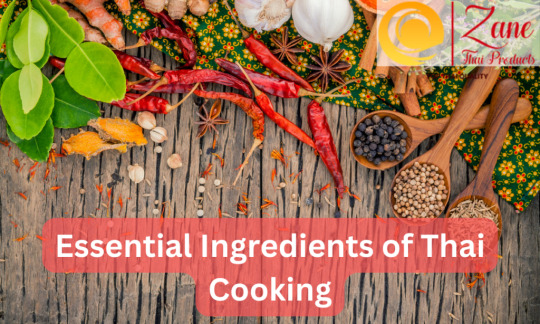
Thai herbs include Thai basil, mint, lemongrass, galangal, and cilantro. Thai basil has a sweet and aromatic flavor, while mint has a stronger licorice or anise taste. Lemongrass is woody, aromatic, and lemony, while galangal is smooth, light, and creamy with black striations. Galangal is used to give soups and curry pastes a vibrant taste. Galangal (Kha) is a less hotly spiced relative, adding a spicy, citrus-like zing to soups and stir-fries.
Thai chilies are thin, tiny, and extremely fiery, and can be frozen or kept in the refrigerator for up to a week. Kaffir lime leaves are used to naturally flavor meats, marinades, salads, dressings, and dipping sauces with hints of salt and acidity. Palm sugar is used to give sauces and pastries a smokey, butterscotch flavor. Palm sugar, coconut milk, sticky rice, jasmine rice, and rice (khao) are all essential ingredients in Thai cooking. Palm sugar provides woody and earthy overtones, while coconut milk provides a creamy sweetness.
These were some of the Thai food ingredients that are quite commonly used in Thailand. The good news is that even if you don't live close to a Thai market, you can still purchase Thai food online, including the aforementioned Thai food ingredients.
#Thai cooking#Thai food dishes#Thai food ingredients#buy Thai food online#Thai snacks#Thai Fruits#Zane Thai Products
0 notes
Text
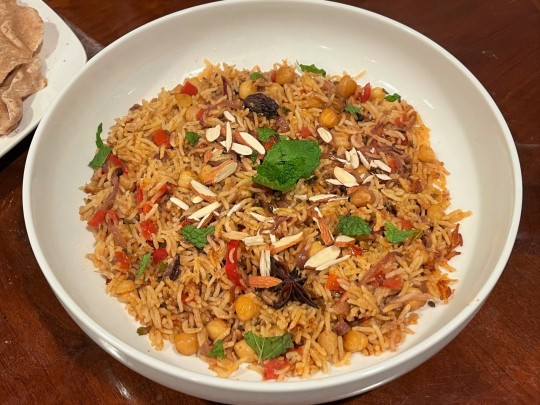
[ID: A large, shallow dish full of golden brown rice with chickpeas, bits of tomato, and whole spices; it is garnished with mint and sliced almonds. End ID.]
Chana pulao (Pakistani-style rice and chickpea dish)
Chana pulao is a simple, tasty vegetarian staple common throughout various regions of India and Pakistan. It is often prepared during Muharram, the first month of the Islamic calendar, but may be prepared year-round. Fragrant, fluffy basmati rice is cooked with aromatics, chilis, tomatoes, pungent spices, and herbs in this filling, one-pot meal.
Recipe under the cut!
Patreon | Tip jar
INGREDIENTS:
2 cups (240g) cooked chana (chickpeas / garbanzo beans)
2 cups (360g) dried basmati rice, rinsed and soaked
3 cups (710mL) water
1 shallot, sliced
2 roma tomatoes, diced (optional)*
2 green chilis, slit
1 green chili, sliced
10 mint leaves, chopped
1-inch chunk (10g) fresh ginger, julienned
4 cloves garlic, chopped and crushed
3 Tbsp neutral oil
Sliced almonds, fried in neutral oil until golden brown, to garnish (optional)
Whole spices:
2 Indian bay leaves (tej patta)**
3 pieces Ceylon / true cinnamon bark (dalchini), or substitute cassia cinnamon
2 green cardamom pods (elaichi)
2 Indian black cardamom pods (badi / kali elaichi)
1 star anise pod (chakri phool)
1 tsp cumin seeds (jeera)
1/4 tsp black peppercorns
5 cloves (laung)
2 Tbsp fennel seeds (saunf)
2 Tbsp coriander seeds (dhania)
1 dried red chili pepper, crushed, or 1 tsp red chili flakes
Ground spices:
1/2 tsp ground turmeric
2 tsp salt
1 tsp Indian chili powder (ground mirchi)***
1 tsp garam masala
All of these spices can be purchased whole or ground at an Asian or halaal grocery store. If you don't have any of the spices, you may omit them. Star anise and fennel both have a licorice-like aroma and may be substituted with each other or with aniseed. Black cardamom has a strong, smoky, camphorous aroma--if you don't have any, just use a bit more green cardamom, cinnamon, and clove.
*Tomatoes are a common add-on but are not strictly traditional in this dish. Add them in for the tangy flavor and additional color, or omit them for lighter, fluffier rice.
**Indian bay leaves are distinct from Turkish or California laurel bay leaves and have a different taste and fragrance. They will be labelled "tej patta" in an Asian or halaal grocery store, and have three vertical lines running along them from root to tip, rather than radiating out diagonally from a central vein. Omit these if you don’t have any.
***Mirchi is made from dried and ground red chilis and is distinct from chili powder, which contains various spices and dried aromatics in addition to ground chilis. Substitute with more red chili flakes, or with another ground red chili powder such as prik bon.
Instructions:
1. If using dried chickpeas: allow a cup (175g) of dried chickpeas to soak in plenty of cool water overnight (or quick soak by placing in a pot and covering in several inches of water, bringing to a boil, removing from heat and allowing to soak for an hour). After soaking, drain chickpeas and place in a pot covered by several inches of water; bring to a simmer and cook for an hour or two until tender. Optionally add a few crushed cloves of garlic, half an onion, and a bay leaf in with the water to flavor the chana.
2. Rinse rice in several changes of cool water until the water runs mostly clear. Cover it with cool water and allow to soak for about half an hour while you prepare the produce and spices.
3. Prepare your produce. Slice shallot by cutting the stem end off, placing each lobe flat-side-down, and slicing horizontally (perpendicular to the root). Dice tomatoes and cut a slit vertically in two green chilis; slice another green chili horizontally. Wash ginger (or peel it, if the peel seems particularly thick or tough) and julienne by slicing thinly in one direction to produce discs, then slicing the discs thinly in another direction to produce matchsticks. Roughly chop garlic and crush it with the flat of your knife. Rinse and roughly chop mint.
4. Heat a few Tbsp of a neutral oil on medium in a large, deep pan. Sauté larger whole spices--cardamom pods, star anise, cinnamon, cloves, and black peppercorns--for 30 about seconds until fragrant. Add smaller seeds (coriander, fennel, and cumin) and fry for another minute until fragrant and a shade darker.
5. Add shallot and fry, agitating often, until golden brown. Add ginger, garlic, green chilis (sliced and whole), and crushed red chili / chili flakes and sauté for 30 seconds until fragrant.
6. Add ground spices and mint and sauté for a few seconds, stirring constantly, until fragrant.
7. Add tomatoes and sauté for several minutes until water has evaporated.
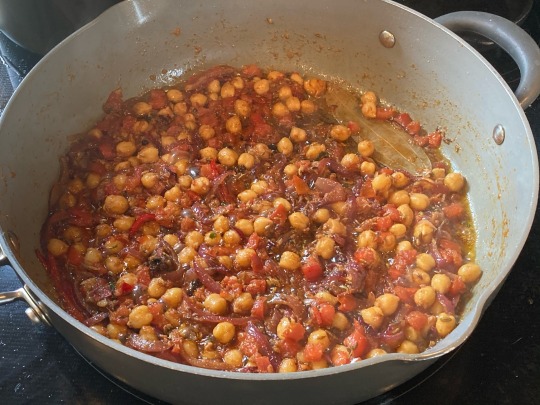
8. Reduce heat to low. Add water, chickpeas, and rice and cook, covered, until rice has absorbed all of the water, 15-20 minutes. If your pan tends to stick or has a thin bottom, stir occasionally.
9. Allow to steam without removing the lid for another 5-10 minutes. Fluff and serve warm. Garnish with sliced almonds, cashews, mint, or lemon as desired.
#vegan#vegetarian#cooking#vegan recipes#chana pulao#rice#basmati rice#garbanzo beans#chickpeas#tomatoes#mint#almonds#Indian#Pakistani#gluten free#Muharram#one pot#under an hour#if you’re using canned beans that is
209 notes
·
View notes
Text
Spices in Chinese
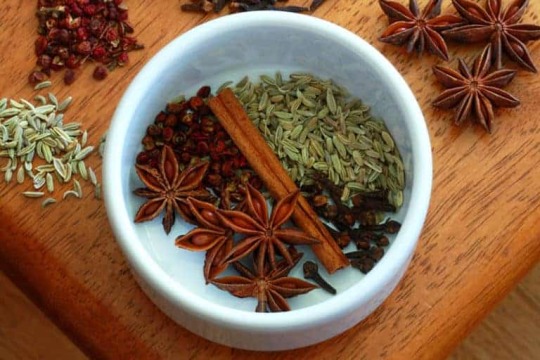
In my totally unbiased opinion, one of the best things about learning Chinese has been learning about Chinese food culture. Chinese food uses a dizzying array of spices, but these are the most common that you'll see in recipes. Learning these words might even help you find your way around your local Asian grocery store!
The Basics:
鹽 (yán): salt 糖 (táng): sugar - Not technically spices, but salt and sugar are essential seasonings in Chinese cooking. Sugar is often used to provide balance in savory dishes, especially in the food of certain regions such as Shanghai. 味精 (wèijīng): MSG -MSG is also a common ingredient (but not really a spice), and not associated with the same racist health panic as in the US. Some chefs, however, see it as "cheating" and prefer to impart umami through traditional ingredients like dried mushrooms and high-quality stock. 粉 (fěn)/面 (miàn): powder - These two words can be stuck to the end of the spices below to indicate that they are ground instead of whole.
Spice Mixes:
五香粉 (wǔxiāngfěn): five-spice powder - A sweet-and-savory spice mix well known around the world, five-spice powder tends to include star anise, Sichuan peppercorn, cinnamon, fennel and cloves. 咖哩粉 (gālífěn): curry powder - British colonization brought curry to Hong Kong, where it's popular with beef or fish balls. 燒烤料 (shāokǎoliào): barbecue spice mix - This doesn't refer to char siu, but to the spicy grilled meat skewers that are popular across China. A typical version hailing from the north-west is based on cumin and chili powder.
Spices:
胡椒 (hújiāo): pepper - Chinese makes use of both white pepper (白胡椒) and black pepper (黑胡椒), but white pepper is more common. 花椒 (huājiāo): Sichuan peppercorn - This is the spice that gives Sichuan food its famous numbing quality, though it is used all across China as well. It comes in red or green varieties, and can be used fresh or dried. 辣椒 (làjiāo): chili pepper - Spicy food is popular in Sichuan and the rest of China's southwest, where tons of chili varieties are used fresh and dry-- this alone could be material for an entire vocab list. 八角 (bājiǎo): star anise - One of the most iconic spices in Chinese cuisine, its name literally means "eight horns". It's commonly tossed into stews and braises. 肉桂 (ròuguì)/桂皮 (guìpí): cinnamon - The cinnamon commonly used in Chinese cuisine is in fact cassia, which is stronger-flavored but less aromatic. 丁香 (dīngxiāng): clove - A key ingredient in five-spice powder and occasionally tossed into braises. Interestingly, many of the sweet spices that we associate with desserts in the US are not commonly used as such in Asia. A friend once told me that many Taiwanese people don't like cinnamon desserts because they find the taste medicinal. 茴香 (huíxiāng): anise seed - This spice is featured in Lu Xun's story Kong Yiji, where Kong Yiji asks the young narrator if he can write the character 茴, which is used in the name of the tavern's peas with anise. 香葉 (xiāngyè): bay leaf - Bay leaves are used in China in much the same way as in the US-- tossed into stews and braises to provide a little... well, nobody knows what a bay leaf tastes like but it must be doing something. 陳皮 (chénpí): aged tangerine peel - American-Chinese classics like orange chicken are likely influenced by stir-fries made with this bitter and fragrant peel. 百荳蔻 (báidòukòu): white cardamom - Chinese food doesn't use the green cardamom commonly used in Indian food, instead preferring to use white cardamom in braised dishes. 草果 (cǎoguǒ): black cardamom, tsao-ko - Black cardamom is dried over a fire, giving it a distinctive smoky flavor. While not overly common in much of China, it is one of the most common seasonings used in Yunnan food. 孜然 (zīrán): cumin - Cumin is also not a flavor commonly associated with China, but it's iconic of the food of China's northwest, such as Shaanxi and Xinjiang. 甘草 (gāncǎo): licorice root 沙姜 (shājiāng); sand ginger 當歸 (dāngguī): angelica root - These three spices are all known for their uses in traditional Chinese medicine, but are also used in medicinal soups and larger spice mixes. There are, of course, way more TCM herbs and spices used in Chinese cooking, but these are the most common to see in recipes or dishes.
#chinese#mandarin chinese#langblr#studyblr#vocab lists#zbtg posts#food#can u guys tell how much i love food and cooking and spices#i'll probably make more lists like this in the future#definitely one for sauces#and maybe vegetables or fruits#or different types of tofu... or noodles...#it also might be fun to do vocab lists for japanese/korean/vietnamese foods#all pretty popular in taiwan at least so i could just google maps some restaurants from where i used to live and go to town
172 notes
·
View notes
Text
Hello, everybody, and welcome to part 1 of 2 of this 300 follower Taco Dragon recipe special!
This post will be detailing the process of making one of the components of the dish, which is
Five Spice Mole Sauce!
@nikkydash
Without spoiling anything for tomorrow's post, I decided that this called for a mole sauce. After debating on how I wanted to approach it (the other options being to either use a premade mole or a 20 minute quickie recipe), I finally decided to say "fuck it" and go for a mole sauce that actually takes a bunch of preparation and ingredients! Whether that's due to my dedication to the craft, the fact that this is a follower milestone special, or an exercise in masochism is something I'll leave up to you.
Anyways...
Let's start with the following:
Onion
Tomato
Tomatillos
Garlic cloves

Cut all these in half or quarters, place on a foil covered sheet pan coated with oil, and roast at 450°F until browned/charred

You could also broil all of this to go faster and get better results, but I had other things to do, like preparing the dried chiles!
Deseed and break apart 4-5 of each of the following dried chili varieties:
Ancho
Guajillo
Japones

Feel free to use whatever varieties you want/have on hand.
Toast them in a dry pan for five minutes, add 2 cups of water, and let simmer/steep for 10 minutes in order to hydrate and soften.

Allow the roasted veggies and reconstituted chiles to cool to a workable temperature before adding to the jar of a blender. In the meantime, we have a lot (and I mean a lot!) of other ingredients to toast/brown. Don't believe me? Look at the picture below:

For the sake of simplicity and my own sanity, I'll be listing these ingredients in separate chunks.
To start, we toast some spices in a dry Dutch oven over medium heat:
Sesame seeds (3 tbsp)
Ground coriander (½ tsp)
Whole black peppercorns (¼ tsp)
Whole cumin seeds (1 tsp)
Dried oregano (1 tsp)
Dried thyme (1 tsp)
Four whole cloves
Once toasted, these will go into a bowl for storage as we do each subsequent part.
Next, adding oil to the pot at the start each time, we toast/heat the other ingredients in the following groupings:
2 corn tortillas, cut into wide strips
⅓ cup sliced almonds
¼ cup raisins (or craisins, in this case)
10 saltine crackers, 1-2 graham crackers, two star anise pods, one cinnamon stick, and 2-3 slices of licorice root
One slice of bread, torn into pieces

It's worth noting that these ingredients are highly customizable, and you can pretty much go by what you have on hand or otherwise have access to. I'm basing this largely on the Binging With Babish version, but I've taken cues from several other recipes, as well as throwing in the five spice element to make it more appropriately "Taco Dragon."
With everything else prepped, they all go into the jar of a blender, along with a teaspoon of minced ginger, 3 tablespoons of peanut butter, and enough chicken broth to thin everything out and make it blendable. You'll almost certainly need to blend in stages and push things down and around.
After blending (which I forgot to photograph 😖), I poured the whole thing through a fine mesh strainer to catch the tough bits. You may not actually need to do this, and you'll end up with a higher yield if you don't.
Anyways, here's what I got after blending and straining:

Now we simmer it, adding 2 oz. of baking chocolate (ideally you would use Mexican chocolate, but it's what I had) and letting it melt in. Simmer for 15-20 minutes after this, adding 2 tbsp sugar and salt to taste.

This sauce is an interesting beast. You get the heat from the chiles, sweetness from the sugar, a noticeable chocolatey background, and a complex spice profile. I have a feeling it'll really have a chance to shine when paired with actual foods. You could use this for, say, tacos or enchiladas or any number of things. The question is: what will I be using it for?
Tune in tomorrow to find out!
#the owl house#taco dragon au#mole sauce#food#cooking#my cooking#not tagging ingredients because jesus christ there are so fucking many
22 notes
·
View notes
Text
Coriander Substitutes
Coriander seeds are mildly flavorful and therefore you must apply them sparingly. They are great with garlic, chili and lamb. The seeds can be used whole for pickling, in drinks, or grind coriander for soups. They also provide a flavor like the rubbed caraway and sage.
Coriander seeds make a potent spice that can be used in a variety of ways. While it's hard to find a substitute of them hacks may assist. Coriander seeds are described as sweet, spicy lemony and sweet and nutty. Here are some great coriander substitutes in case you don't make use of them.
What exactly is Coriander?
Let's find out more about coriander prior to we look into alternatives to coriander.
Coriander could be used in any food to impart a citrus flavor and aroma. Chefs and home cooks also employ coriander as a flavor or herb to enhance the flavor. Coriander is a spice that many people don't enjoy and are able to detect it as very soapy. The natural compounds and chemicals found in coriander contribute to the flavor.
Coriander belongs to the Apiaceae family. Other food items in this popular family include celery, carrots and parsley. The family also contains many well-known spices, including anise and dill.
The entire plant is known as coriander in many countries. The seeds, however, are known as "coriander seeds" in North America. They are merely called coriander.
This article will focus to replacing coriander seeds with spices in dishes. But, we'll also provide a few quick guidelines about how to substitute cilantro. Coriander seeds possess an mildly tart, earthy and sweet flavor, as well as the scent of flowers. While it's difficult to replicate, it is not impossible to reproduce the flavor.

Coriander vs Cilantro
It is very common to mix cilantro with coriander. The stems and leaves are referred to as "cilantro" throughout the United States, while the dried seeds are known as "coriander".
The herb's fresh flavor is known for its coriander flavor in the UK as well as other countries. In addition, it is known as cilantro by Spain. Coriander and cilantro could be used interchangeably, but that's not the case. To clarify, "coriander" is the name given to both the leaves and stem from the plants. Dry seeds are also known as "coriander seeds".
While the names might be interchangeable, each ingredient has an individual purpose when cooking. Chefs and home cooks alike make use of coriander seeds as an ingredient in their cooking. But, cilantro or coriander leaves can also be used to garnish dishes.
Coriander Substitutes
1. Cumin
Cumin is the most suitable substitute for ground coriander, and you shouldn't overlook it. The popularity of it and the similar taste makes it my top option. Cumin is a very popular spice that can be found in a variety of dishes like stews, meats, soups and stews. It is derived from the dried seeds that are part of the Cuminum Cyminum plant.
Both cumin and coriander are both earthy however, the cumin is more hot and spicy. To preserve the flavour, replace the coriander by 3/4 with cumin. Black cumin is an excellent option for a more sweet scent.
2. Caraway Seeds
Caraway seeds are a great alternative to ground coriander. Caraway also offers the same earthy taste like coriander. It is part of the same family of herbs. This spice is an excellent alternative to cumin when cooking because of its similar flavor and family roots.
The spice is commonly employed in potato salads and other recipes. It is a substitute with coriander using ground or dried coriander. If there is no cilantro available, caraway seeds are a good alternative for their nutty and spicy taste.
While it is similar to coriander, getting this herb is challenging. Caraway isn't quite as well-known as cumin, and is more expensive. Caraway is more sweet than coriander. If you want to replace coriander, begin by adding a small amount of it and then increase it as needed.
3. Parsley
A lot of people across the world believe that coriander is the same as parsley, due to the fact that they share the same appearance and flavor. Both are high in calcium, iron, along with vitamin C. Additionally, they contain anti-inflammatory properties.
There are two kinds of parsley: flat-leaf as well as curly-leaf. They can both be utilized as excellent substitutes for coriander in your favourite dishes.
Parsley can be used in a variety of ways, such as for an ingredient in salads. It is also a great ingredient with garlic to make an aromatic flavor that can be used to create garlic butter bread as well as other sauces. Tabbouleh salad is an excellent recipe which makes use of parsley. It also has bulgur, lemon, tomato Wheat and green onions as well as other ingredients.
4. Garam Masala
Garam masala, frequently utilized in Indian dishes such as Indian Chicken Curry and Indian Chicken Curry, in reality includes an assortment of spices. It is mostly composed of coriander, cumin and cloves.
Garam masala is a good substitute for coriander due to its coriander. The mixture could have more flavor due to the spice addition. The strength of the mixture could also be its weak point. Other spices in garam masala can be the difference between an entire dish. Garam masala is also a source of turmeric, which can cause the dish appear yellow. If garam masala is substituted for coriander that has been dried, it is recommended to use very little.
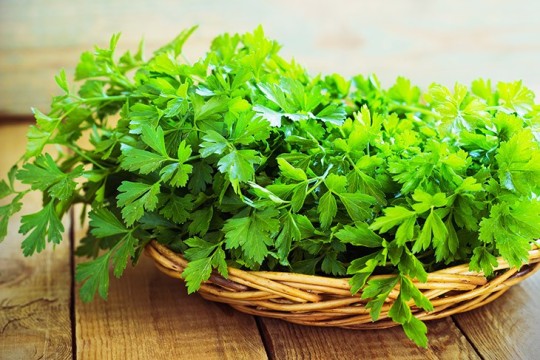
5. Chervil
Chervil is the other herb that could be employed to serve as substitute for coriander replacement. Chervil is described as a smaller, more feathery form of parsley. The leaves of the chervil plant are smaller. It has a sweet, mild taste.
There are numerous uses for this herb in traditional medicine, for example, treating hiccups, digestive aid or to lower blood pressure. The herb is commonly utilized in butter sauces, soups, fish, and eggs. The peas with Chervil are a tasty and easy way to serve grill chicken or fish at a dinner party. They can also be used to garnish numerous dishes.
6. Eryngium Foetidum
Coriander substitutes can be prepared using Eryngium Foetidum
This herb can be referred to as the long coriander (recao) culantro, culantro, or culantro. It's almost the same pronunciation in the same way as cilantro seeds (coriander). It is also a rich source of calcium, vitamin C B. A, iron and the mineral phosphorus.
Coriander has a more pronounced scent and harder leaves than. It is therefore referred to as less strong version of culantro. It's an alternative to coriander to make Asian curries, soups and noodles. It's also based off the most well-known Puerto Rican cooking recipe, sofrito which contains onion, garlic and chili.
7. Mint -- Aromatic Herb
Mint leaves are a great alternative to parsley and coriander in the event that you do not want to include them in your food items. There are about 13-18 varieties of mint, however there's no way to distinguish between the two. Many people associate mint with its spicy and aromatic taste.
8. Curry powder
It is a mix of spices, not one spice. Most curries include spices and herbs, such as chili powder, turmeric as well as garam masala. All recipes that require coriander like this chickpea curry or vegetable coconut curry can be spiced with a tiny bit of it.
9. Basil
Basil may alter the flavor of certain dishes , however it can also be used as a alternative to cilantro in some instances. If you're looking for a substitute for cilantro there are a variety of basil.
Thai basil can be described as a kind of basil that has a distinct flavor. It's sometimes referred to as spicy or similar to licorice. Thai basil is a great substitute of cilantro and add some flavor to certain dishes , such as curries. Chop basil is a great option to use as a garnish that can give your dish a vibrant and fresh appearance that won't sacrifice taste.
10. Oregano
Oregano belongs to the mint family of mint. The dried leaves are distinct from the coriander seed with regard to their flavor, but they contain certain components that are not present in other varieties. It's both hot and sweet, and has distinct aromas. Mixing equal quantities of cumin and oregano can aid in capturing the complex flavor that coriander seeds offer.
Summary
Coriander is a great ingredient in a myriad of delicious dishes however, it doesn't mean that you can't eat delicious meals without using it. You can create a fantastic dish using any of these spices. You could substitute for coriander for any other spice and be willing to experiment with new ingredients when cooking.
There are many options for coriander and cilantro that one can locate and utilize. The fresh cilantro is able to be substituted by other herbs, and there are spices for powdered (ground) and seeds forms coriander. Based on the type of dish being prepared various kinds of spices and herbs will be utilized.
View more: https://www.dohwanyc.com/coriander-substitutes/
0 notes
Text

Nocturne Alchemy Summer Limited Reviews
Originally published on 7/2/2019
Yikes. So I never finished my Vaults, did I? Well, I'll have to come back to it! Right now, I have a few reviews I wanted to get posted from the Nocturne Alchemy Summer Limited Collection release. I'm also including a brief review of the PC Eternal Egypt, for reference purposes! I chose three perfumes, and they sent me one of their choice because I won a giveaway on their business FB page. So what I have here, in the picture, is Eternal Egypt Summer, Eternal Egypt Ambre, Chamomile, Vanilla & Spice Tea, and Apricot Sugar. The sample is Kashmir, which is the free sample while available, that they send along with orders. Any of you who have been following me for a while know that Kashmir is one of my favorites! Let's hop right to it, shall we?
First off, I want to talk about one of my desert island scents - Eternal Egypt. I'll be brief, but I think it's helpful for comparison to the two special versions I picked from the Summer LC. The NA site has this description: Eternal Egypt (Signature Blend): White Amber, Red Egyptian Musk, Egyptian Amber and the sands of Egypt.
I started off with a sample of this many moons ago, and at first I was a little leery - I had ridiculously bad luck wearing ambers. Smelled like baby powder on my skin. I think I wound up putting the sample in my box for about six months, and one day I dug it out and waved it in front of Jody's nose. Win. He was instantly a fan, and he remains one to this day - it's one of his favorites on me and he can name it when I wear it. I think it's the only one he knows, even though he has others he loves, too. It truly is a signature scent. I graduated from the sample, to a 5ml, and now I have a 10ml I'm flying through. The white amber gives this almost a coconut vibe? This is very bright and fresh, and that sandy note, I don't know how they do it, but this is just such a classy scent. It feels like a high end perfume, but at the same time, it's very easy to wear. I must say this is pretty perfect to represent Egypt - when I wear it, I am transported. I feel like the red musk gives this just the slightest bit of sexiness. If you've tried Crimson, I think that's the red musk here, or something similar, as it's not the bold red musk style of Kashmir. It's clean and a little spicy, and very appealing. The combination of the musk and amber is just totally perfect.

I've added a picture of Eternal Egypt Summer and Eternal Egypt Ambre side by side, so you can see the height difference. Ambre isn't as big as my 10ml original EE, but it's definitely larger than the standard 5ml.
One thing I want to mention, about a lot of Nocturne Alchemy perfumes, and particularly Eternal Egypt: these do get travel shocked. So a little caution note, a little imploring: Please do not judge these by what they smell like when you first get them - and please, please try them on your skin before you dismiss them. They change quite a lot with some rest, and what you smell in the bottle can be very different once it melds with your skin and warms up. Eternal Egypt variations in particular seem to do a lot of "filling out" with age; they get richer, more beautiful - the notes seem to meld and really reach their full potential with a little time in your possession. So my initial reviews will stand, but it's like they're amplified TL;DR? Give these some time. It's summer, it's hot, they've traveled a distance to get to you.
Eternal Egypt Summer is part of the sub-collection Eternal Summer. Notes are: White Amber, Labdanum, Crystalline, a little eNVie saphir Amber, Copal, Guaiac wood, Lavender, NA Chypre accord. I opened this fresh out of the mail (not advised, ever, I have to say, but I have no self-restraint) and I swooned a little. This is pretty different than the original. It's got a cool feel to it. I gave it a few days to rest before I tried it on my skin, but I could kind of tell right away I was going to love this. Converse to the cool feel, there's a warmth here from the copal, a sweetness from the guaiac. The lavender isn't a star, but I think rather blends with the chypre, which is absolutely lovely. I usually like chypres, and this is no exception. You can definitely tell that there's an essence of Eternal Egypt to this, but if you're worried you might be getting a dupe, you're definitely not. How does this make me feel? Like I'm at the beach. It's a perfect, sunny day, the water is a sparkling turquoise, and there's a cool sea breeze on my sun-warmed skin. Yes, this feels like summer to me.
Eternal Egypt Ambre is a part of the 13th anniversary collection. NA says this: Eternal Egypt Anniversary Collection – a reinterpretation with exclusive notes, beautiful blue pearl bottles but most importantly celebrating thirteen years of the original perfume blend from Nocturne Alchemy in four new iterations and limited to 75 bottles each. From the elegant label art to the carefully chosen bottle and the exquisite ingredients, the owner & creator of Nocturne Alchemy (Emerson Hart) wanted the create something to honour the first perfume created at Nocturne Alchemy thirteen years ago. Aging these perfume will bring out the resins and natural notes.
The notes for Eternal Egypt Ambre are: Bastet’s Amber Absolute, Labdanum, Cedar essential, Palo Santo essential, Black Patchouli, Benzoin, Heliotrope, Smoked Balsam of Peru, Italian Lavandin, Black Pepper and White Amber Absolute. Oooof. Well, y'all already know how much I adore Bastet Amber, and here we have my two desert island scents? Okay, that was an obvious gimme. This, too, is pretty obviously different from the original Eternal Egypt. The bottle is GORGEOUS, as is the label! When I first got this, it was far more travel shocked than Eternal Egypt Summer. I couldn't really tell what was going on, and there was almost a black licorice note in the bottle sniff. What? Turns out, that's the palo santo note. It can smell like anise, or minty...but I gave this a good bit of rest before I tried it on my skin. Four days. The anise had calmed down, and I could get an idea of what this was going to be like on my skin, I thought - except, it was so much better than I could have imagined! It absolutely transformed once it warmed up and melded with my skin. Wow. This is more complex, and sexier, than Summer. I'm having a hard time picking out individual notes, that's how well blended this one is. If Summer is bright and fun, a day at the beach - Ambre is a sultry summer night, a slinky black dress, and low slung heels. The palo santo gives this a cool feel, as does the white amber.
Honestly just so glad I chose both of these, I have several variations of Eternal Egypt, because I love it that much, and these are two wonderful additions to my collection. Backup worthy, really.
One of my favorite things Nocturne Alchemy does for their Summer Collections are the Summer Tea and Tea Service. You can read my reviews here, although I've added more that I haven't reviewed from previous collections. The Summer Tea Service reviews are separate, you can find them here. Y'all, it's hot in Florida. And it's hot from April right through December these days. I find myself craving the Summer Teas as soon as it warms up, so they get a lot of wear from me. Green Tea Crimson is easily in my top five all time favorites, ever.
Last year I missed out, but my good friend Heather grabbed Apricot Sugar, and absolutely adored it. So I promised myself if it came back in the Resurgence, I would for sure have to nab it - it seemed like everything she wore it with was perfect, and of course, it was wearable alone. So I chose that for my third bottle, and as I mentioned, I won a giveaway (thanks, y'all, SO much!) on the Nocturne Alchemy business page, for a free bottle of their choice from the LCs. They chose Chamomile, Vanilla & Spice Tea for me. I had already eyed it, because it sounded delightful. The notes for this are: Blue German Chamomile, Bastet’s Ice Cream Accord, Vanilla Bean, Vanilla essence, Black Tea, Cardamom Spice and a little sugar. I love chamomile tea. I have one that's chamomile and vanilla, and it's so soothing, puts me right to sleep! And Jody's mom grows chamomile. This is very realistic. I guess this could possibly go a little floral, but they are such masters at blending, that never happens here. It's got a bit of a floral/herbal tinge to it, for sure, but it's reigned in beautifully by the vanillas. The cardamom is more of a supporting note on my skin, just a slightly spiced warmth, honestly, it's perfection. The balance here is superb. The black tea is something I utterly love, and it adds a little strength to this. Unfh. I've mentioned before, I didn't use to like tea notes, they would go bitter on my skin, but that's never happened with NA, and this is no exception. This is just so appealing! I could not be happier with what they chose for me, I adore it. The ice cream accord adds a tiny bit of foodiness, and it's at the perfect amount. Yum. Obviously, you can easily wear this alone, but I love to layer my Summer Teas with the Tea Service, it just is the perfect compliment. The first time I wore this, I added a little dab of Apricot Sugar, because that's what I had on hand, and it was delightful! I wasn't sure if it was going to wear well with this one, but I have to say if you have both of these you really should try this, it was a wonderful surprise. I've since tried Rice Milk and Sugarcube, and those are both easy winners, too. I haven't tried Sweet Santalum Milk or Coconut Milk, but I suspect those will work well, too - or even my original Bastet's Ice Cream Accord, if you want your tea to be a little creamier/more foodie.
Apricot Sugar: Apricot stone essence, Apricot Skin, Egyptian Sugar accord, Papaya skin and Vanilla fleck. Oh, how much do I love NA's sugar note. It's just so dang good! I have a couple of bottles of the original Sugarcube, and I have worn it alone, because I love it so much. There's almost a freshness to it, and of course sweetness - but it's not tooth-achingly sweet, if that makes sense. That base is pretty present here, more so than it is with Lemon Sugar. The apricot is bright, juicy and just a little tangy, and extremely realistic. I think the papaya skin is more of a supporting note, I've had it in other blends and enjoyed it, but I don't really notice it here. It may be adding to that juiciness. This is a simple blend, but it was meant to be layered, and it really shines when you do that. As I mentioned above, I wore it with Chamomile, Vanilla & Spice Tea, and I've also worn it with White Tea Vanilla, and Crystal, so far. I'm going to try it with Santalum White and White Ambre Ombre, because I feel like those will be great pairings, too. I think this is a very versatile layering perfume, and would be lovely with so many perfumes. Anything with vanilla, for sure. Bastet Ice Cream Accord, some Dinos, Eternal Ankh, really I think anything you think might work. I bet it would be pretty with Egyptian Musk, and definitely Diamond. I'm so happy I grabbed this! If you were a fan of, or yearning for, Love of Bastet: Pink Vanille, I think you should definitely get this.
I have Dimetrodon from last year, but I've run out of time, today, so I'll post that separately. It's currently available in the Summer LC Resurgence, in the Prehistoria collection.
What did you choose from this release? What are you looking at? I'm eyeing a Dino or two, and more Teas....always more Teas! I hope y'all enjoyed these reviews, and they helped you to make some decisions. As always, thanks for reading!
0 notes